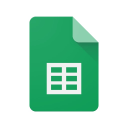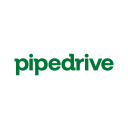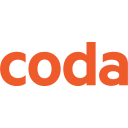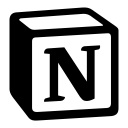Airtable vs Coda: How to choose the right tool for your business
- 01Airtable vs Coda: overview
- 02What's the difference between Airtable and Coda?
- 03Airtable pros and cons
- 04Coda pros and cons
- 05Airtable compared to Coda
- 06Coda compared to Airtable
- 07Features comparison
- 08Airtable vs Coda: Which is the best for your business?
- 09Promotions on Collaboration software
- 10Alternatives to Airtable & Coda
Access up to $1,000 savings on Airtable & $1,000 on Coda
Access up to $1,000 savings on Airtable & $1,000 on Coda
Many businesses work with large datasets, including customer information, transaction records, and financial market data. However, the absence of a system to manage this information effectively can lead to inaccurate analyses and overlook meaningful insights. Fortunately, several no-code tools are available that enable businesses to leverage the power of data by building relational databases.
Airtable and Coda are two popular solutions on the market. To help you decide whether these tools are right for your business, we’ve prepared a detailed comparison of their key features, main differences, and pricing approaches. Let’s take a look at Airtable vs Coda!
Airtable vs Coda: overview
Airtable and Coda are both prominent players in the field of collaborative project management and database tools, each with unique features and strengths catering to various user needs.
Airtable is renowned for its versatile database capabilities blended with a user-friendly interface. It stands out for its ability to manage and organize data in a visually appealing and intuitive way, akin to a spreadsheet but with the power of a database. On the other hand, Coda offers a distinctive approach by integrating document creation with smart tables and interactive building blocks. It's prized for its ability to create dynamic documents that act like apps, allowing users to weave together tables, text, and interactive controls.
Now, let's explore the Airtable vs. Coda comparison further to help you make a well-informed decision when it comes to selecting the most fitting project management and database tool for your specific requirements.
What's the difference between Airtable and Coda?
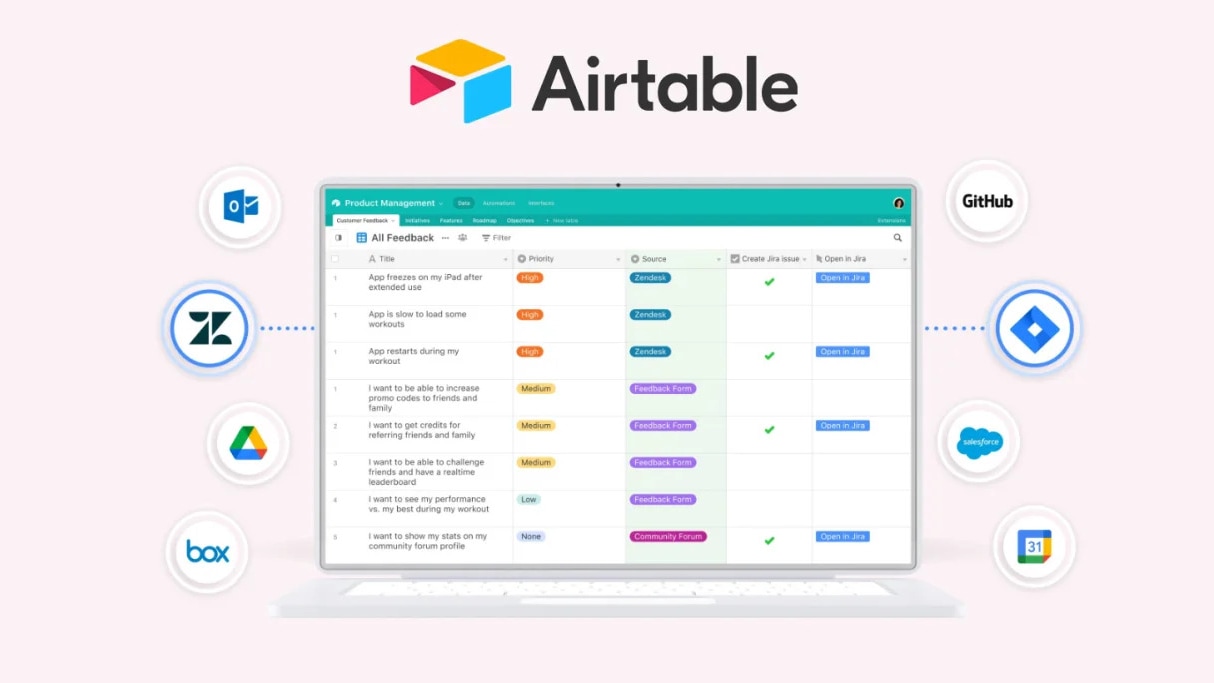

Airtable and Coda offer powerful features for organizing and collaborating on data, catering to businesses of all sizes. With user-friendly interfaces and no coding required, both tools are ideal for users of all technical levels, including beginners. Nonetheless, several key differences exist between the platforms to consider when deciding which tool is right for your business. The main difference is the platforms’ approaches to data organization. Airtable adopts a sheet or table-based structure, similar to Google Sheets or Excel. If you have experience with these tools, Airtable will present little to no learning curve. Airtable is ideal for working with large datasets, particularly structured data. Users can create custom databases and manage, view, and collaborate on their data.
Coda, on the other hand, organizes data within a document format, similar to Google Docs. This format lets users embed different elements directly into the document, including tables, sections, integrations, and automation. With Coda, users have a high degree of flexibility and can rearrange these elements as necessary to adapt them to their projects. These features make Coda ideal for brainstorming, managing interactive workflows, and creating project timelines. Your preferred approach may help guide your choice between the two platforms.
Beyond data organization, Airtable and Coda’s pricing structures also differ. Both offer free plans with varying inclusions, plus three levels of paid plans with increasing access to features. Airtable charger per seat or user—$20/seat/month for its Team plan (1 workspace) and $45/seat/month for its Business plan (unlimited workspaces). Compared to Airtable, Coda charges per “doc maker,” i.e., the people in your organization who create new documents. Coda doesn’t charge for users who edit or view a document. If you only have one or two doc makers in your organization, Coda may offer a very affordable solution.

$1,000 in credits for 1 year on Airtable
Get $1,000 in credits for 1 year on Airtable and up to $1,000 savings with Secret.
Airtable pros and cons
What are the advantages of Airtable?
- Intuitive interface: Airtable offers a user-friendly interface that resembles a spreadsheet, making it easily accessible for users familiar with programs like Excel. This lowers the learning curve and enhances usability.
- Customization and flexibility: It allows for high levels of customization in terms of fields, views, and data types. Users can tailor their databases to suit specific needs and workflows.
- Visual organization and presentation: With options like Kanban boards, calendar views, and gallery views, Airtable enables users to visualize their data in various formats, aiding in better organization and presentation.
- Integration capabilities: Airtable integrates with a wide range of apps and services, enhancing its functionality and enabling users to connect it with other tools they use.
- Collaboration features: It supports real-time collaboration, making it easy for teams to work together on the same database. This includes features like shared views, commenting, and notification options.
What are the disadvantages of Airtable?
- Cost: While Airtable offers a free tier, its more advanced features are locked behind paid plans, which can be expensive for small businesses or individual users.
- Complexity with large data sets: Managing large datasets can become cumbersome in Airtable, as it is not primarily designed for handling very large databases or complex queries like a traditional database system.
- Limited reporting tools: Compared to specialized database tools, Airtable's reporting and analytics capabilities are somewhat limited, which might not suffice for users needing in-depth data analysis.
- Performance issues: Users might experience performance lags or slowdowns when working with extensive and complex databases, especially on lower-tier plans.
- Learning curve for advanced features: While the basic features are user-friendly, mastering its advanced functionalities, like automation and integrations, might require a steeper learning curve and more time investment.
Compare Airtable to other tools
Coda pros and cons
What are the advantages of Coda?
- Integrated document and database management: Coda uniquely blends document creation with database functions, allowing users to create dynamic documents that incorporate tables, text, and interactive elements, making it an all-in-one tool for project management and documentation.
- Customizable templates and building blocks: It offers a wide range of templates and building blocks, which can be customized to suit different project needs, enhancing flexibility and user experience.
- Automation and interactive elements: Coda supports automation features and interactive elements like buttons and sliders, enabling users to create more interactive and efficient workflows.
- Collaboration and sharing features: Like Airtable, Coda also excels in collaboration, offering real-time co-editing, commenting, and sharing options, making it ideal for team projects.
- User-friendly interface: Despite its advanced capabilities, Coda maintains a user-friendly interface, making it accessible for users who are not necessarily tech-savvy.
What are the disadvantages of Coda?
- Steep learning curve for advanced features: While Coda is user-friendly, fully leveraging its advanced functionalities and customization options can have a steeper learning curve, especially for users not familiar with programming concepts.
- Performance with large datasets: Similar to Airtable, Coda can also experience performance issues when handling very large datasets or complex documents.
- Limited Offline capabilities: Coda relies heavily on an internet connection, and its offline capabilities are limited, which can be a drawback in scenarios with poor or no internet access.
- Integration limitations: While Coda offers integrations, its range and depth of integration capabilities might not be as extensive as some other platforms, potentially limiting its adaptability in certain tech ecosystems.
- Pricing structure: For accessing more advanced features and larger capacity, Coda requires a subscription, which might be a consideration for budget-conscious individuals or small teams.
Compare Coda to other tools
Airtable compared to Coda
Airtable and Coda are both innovative tools reshaping how teams manage projects and data, but they cater to different preferences and needs. Airtable's spreadsheet-like interface appeals to those seeking an intuitive and visually organized platform, offering great customization in database management. It's ideal for users wanting a balance between ease of use and powerful data manipulation.
On the other hand, Coda stands out with its unique blend of document creation and database functionality, offering a more integrated approach. It's perfect for teams desiring a versatile tool that combines traditional document editing with interactive database features, albeit with a slightly steeper learning curve.
Is Airtable better than Coda?
Determining whether Airtable is better than Coda depends largely on the specific needs and preferences of the user. Airtable excels with its intuitive, spreadsheet-like interface and robust customization options, making it a favorite for those who prioritize ease of use and visual data organization. Conversely, Coda offers a more integrated approach, blending document creation with database functionalities, which is ideal for users seeking a versatile tool that merges text and data management.
The choice between Airtable and Coda hinges on whether a user values simplicity and visual organization or a more holistic, document-centric approach to project management and data handling.
What is Airtable best used for?
Airtable shines as a versatile platform, best utilized for managing and organizing diverse types of data in a visually intuitive and customizable way. Its design, akin to a user-friendly spreadsheet, makes it ideal for a wide range of applications, from project management and event planning to inventory tracking and CRM.
The platform's strength lies in its ability to blend the simplicity of a spreadsheet with the robust functionality of a database, allowing users to create unique workflows, automate tasks, and collaborate efficiently. This flexibility makes Airtable particularly appealing to businesses and teams seeking a balance between ease of use and powerful data organization.
Can Airtable replace Coda?
Whether Airtable can replace Coda is contingent on the specific requirements and workflows of the user. Airtable, with its spreadsheet-like interface and strong data organization capabilities, excels in scenarios where managing and visualizing diverse data types in a simple, yet powerful manner is key.
However, Coda offers a unique proposition by integrating document creation with database functionalities, catering to those who seek a more unified tool for managing text and data together. Thus, while Airtable might be a suitable alternative for users focused on database and project management aspects, it may not fully replace Coda's comprehensive approach to document-centric data handling and collaboration.
Is Airtable cheaper than Coda?
Comparing the cost-effectiveness of Airtable and Coda depends on the specific needs and scale of use. Airtable’s pricing structure offers a free tier with basic features, which is suitable for small projects or individual use, but its more advanced functionalities, especially for larger teams and complex workflows, come with a subscription cost.
Similarly, Coda also provides a free version, with pricing scaling up for more advanced features and larger team collaborations. The overall cost for either platform varies based on the required feature set and the number of users. Therefore, whether Airtable is cheaper than Coda is not a straightforward comparison and largely hinges on the specific requirements and usage scale of the organization or individual.
Is there a better Collaboration software than Airtable?
Determining if there is a "better" software than Airtable hinges on your specific project management and database needs. Airtable excels with its user-friendly, spreadsheet-like interface and versatile data management features.
However, alternatives to Airtable like Notion, Trello, and Microsoft PowerApps may suit certain users better. Notion is known for its extensive note-taking and project management capabilities, while Trello offers a more visual, card-based approach to task management. Microsoft PowerApps, on the other hand, allows for more complex database applications and integration with other Microsoft services. The choice of a "better" software depends on your unique requirements, budget, and the specific functionalities you need.
$1,000 in credits for 1 year on Airtable
Get $1,000 in credits for 1 year on Airtable and up to $1,000 savings with Secret.
Coda compared to Airtable
Coda and Airtable, while both serving as project management and database tools, cater to different user preferences and needs. Coda offers a unique blend of document creation and database functionality, ideal for those who require an all-in-one platform for text and data management. Its ability to create dynamic, app-like documents sets it apart.
Airtable, in contrast, focuses on providing a more traditional database experience with a user-friendly, spreadsheet-like interface. It excels in organizing and visualizing data, making it a great choice for users who prioritize ease of use and visual data organization. The decision between Coda and Airtable ultimately depends on whether a user values integrated document handling or a straightforward database-focused approach.
Is Coda better than Airtable?
Whether Coda is better than Airtable largely depends on individual needs and preferences in data management and project planning. Coda stands out with its unique approach of integrating document creation with database functionalities, making it ideal for those who seek a seamless blend of text and data in one platform. Its customizable templates and interactive elements cater to users needing a versatile, all-in-one tool. Airtable, on the other hand, excels in providing a user-friendly, spreadsheet-like interface, preferred for straightforward data organization and visualization.
The choice between Coda and Airtable hinges on the specific requirements of the user, whether they prioritize integrated document-database capabilities or a more traditional database experience.
What is Coda best used for?
Coda is best utilized as a versatile tool for integrating document creation with database functionalities, making it ideal for users who need to blend text and data management within a single platform. Its strength lies in the ability to create dynamic documents that act like apps, offering a unique approach to organizing information, project management, and team collaboration.
Coda's customizable templates and interactive elements, such as buttons and sliders, make it well-suited for a wide range of applications, from personal task management to complex business workflows. It particularly appeals to teams seeking a comprehensive solution for creating, sharing, and managing both documents and data effectively.
Can Coda replace Airtable?
Determining if Coda can replace Airtable depends on the specific requirements and workflow preferences of the user. Coda offers a unique approach by integrating document management with database functionalities, catering to those who seek a comprehensive platform for managing both text and data. Its ability to create dynamic, app-like documents makes it a strong candidate for users needing advanced document integration with their data management.
However, Airtable, with its user-friendly, spreadsheet-like interface, is preferred for straightforward database management and visual data organization. Whether Coda can replace Airtable hinges on the user's need for integrated document capabilities versus a focus on traditional database functionality and ease of use.
Is Coda cheaper than Airtable?
The comparison of cost-effectiveness between Coda and Airtable is not straightforward and depends on the specific needs and scale of usage. Coda provides a free version and adopts a pricing model that scales with the advanced features and team size, making it a potentially cost-effective solution for smaller teams or individual users.
Airtable also offers a free tier, but accessing its more advanced database functionalities can lead to higher subscription costs, especially for larger teams. The decision on which is cheaper, Coda or Airtable, will vary based on the required feature set, the number of collaborators, and the scale of data and project management needs of the user or organization.
Is there a better Document Management software than Coda?
Determining if there is a superior software to Coda depends on your specific project management and documentation needs. Coda, known for its unique integration of document creation and database functionalities, suits a specific set of requirements.
However, alternatives to Coda like Notion, Airtable, and Trello offer varied strengths. Notion excels in comprehensive note-taking and project management, while Airtable provides a more traditional database experience with a user-friendly, spreadsheet-like interface. Trello offers a visually oriented task management approach. The choice of a more suitable software depends on your particular use case, budget, and the specific functionalities you seek.
6 months free on the Team plan + Unlimited AI on Coda
Get 6 months free on the Team plan + Unlimited AI on Coda and up to $1,000 savings with Secret.
Features comparison
Airtable and Coda Offer Equally Robust Integration Capabilities

In the landscape of project management and database tools, both Airtable and Coda stand out for their extensive integration capabilities, offering seamless connections with various external applications and services. Airtable's integration prowess allows it to sync with popular tools like Slack for communication, Trello for task management, and even Salesforce for CRM, enhancing its versatility in various business contexts. For example, a marketing team can integrate Airtable with their email marketing platform to streamline campaign tracking.
Similarly, Coda offers robust integrations, such as with Google Drive for document storage and GitHub for software development tracking. This enables teams to create a cohesive workflow by connecting their Coda documents with essential tools used in their daily operations. A project manager, for instance, could link Coda with a time-tracking tool to monitor project progress efficiently. In this aspect, both Airtable and Coda demonstrate an impressive level of adaptability and functionality, making them equally competent in terms of integration capabilities, catering to a diverse range of user needs and enhancing overall productivity.
Airtable Triumphs in User-Friendly Design Over Coda
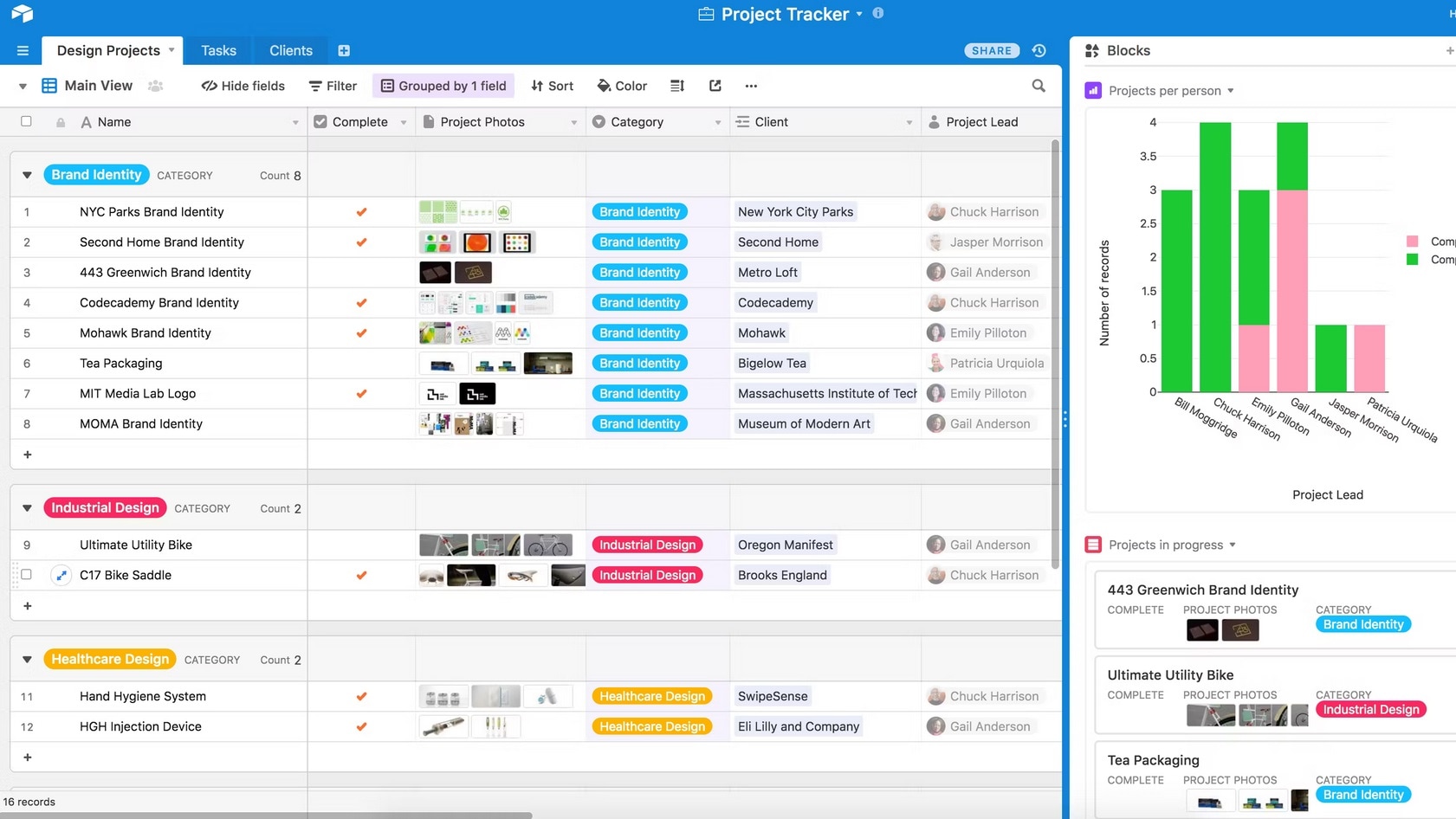
In the realm of project management and database tools, the ease-of-use factor significantly differentiates Airtable from Coda. Airtable's interface is notably user-friendly, appealing to a broad range of users, from novices to experts. Its layout, characterized by a highly visual and intuitive design, incorporates drag-and-drop functionality and easy-to-use templates, which streamline project management. For instance, setting up a content calendar or an inventory tracking system in Airtable can be done quickly, even by those with minimal technical expertise. This ease of use effectively reduces the learning curve commonly associated with new software.
On the other hand, Coda, while offering a robust set of features that include dynamic document creation and customizable views, tends to present a steeper learning curve, especially for beginners. Its comprehensive approach, blending text documents with database functionalities, can be somewhat overwhelming at first, requiring users to invest more time in mastering its intricacies. Therefore, for those prioritizing straightforward, quick-to-learn tools, Airtable emerges as the more user-friendly choice over Coda.
Both Airtable and Coda Go Hand in Hand with their Real-Time Collaboration Features
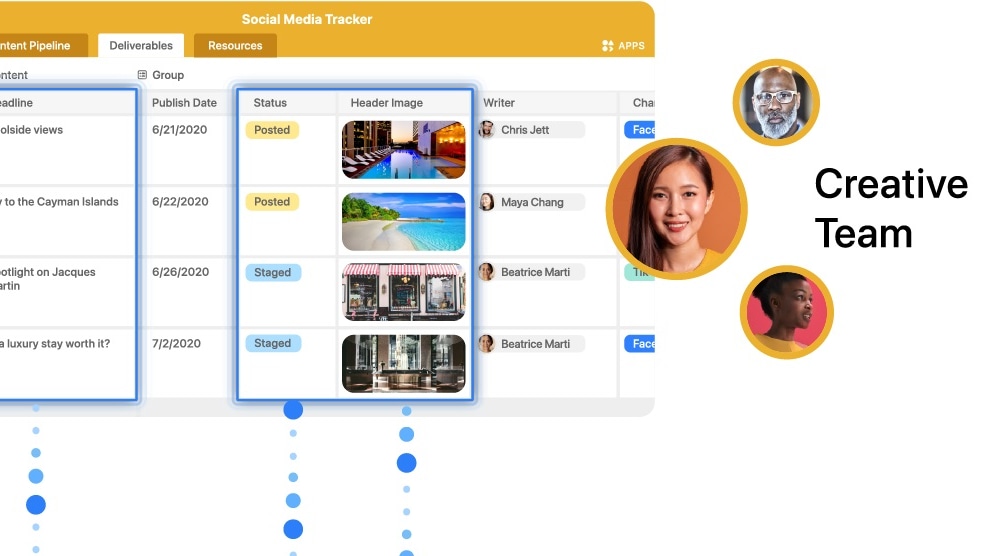
Both Airtable and Coda excel in offering robust real-time collaboration features, critical for efficient team dynamics. These tools enable multiple users to simultaneously contribute to a single project, ensuring that all team members are on the same page with live updates of changes. For instance, in Airtable, team members can work together on a shared database, instantly seeing updates or modifications made by colleagues, which is essential in fast-paced environments like event planning or content scheduling.
Coda similarly allows real-time collaboration on documents and databases, with features for commenting, mentioning collaborators, and tracking revisions. This is particularly useful in scenarios such as product development planning, where team input and ongoing adjustments are pivotal. Both platforms also offer robust commenting systems, allowing team members to leave contextual feedback or start discussions directly within the project, enhancing clarity and avoiding miscommunications. This seamless integration of collaborative tools within both Airtable and Coda makes them equally outstanding for teams seeking a dynamic, interactive, and cohesive work environment.
Coda Advances Beyond Airtable in Interactive Interface Design
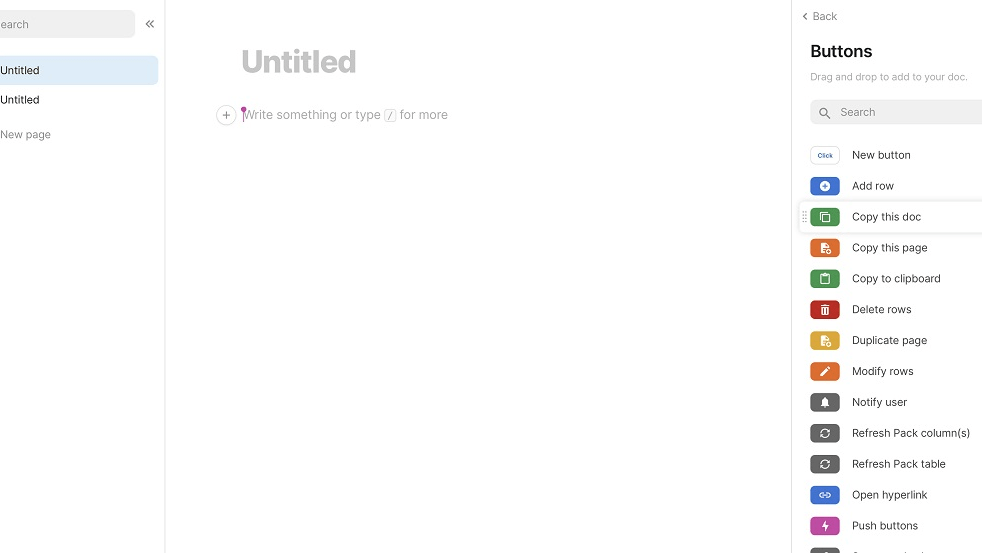
In the domain of data management and operation, the user interface plays a pivotal role in defining the ease and effectiveness of use. While Airtable offers a diverse range of field types for customizing databases, Coda elevates the user experience by incorporating interactive elements like buttons, checkboxes, dropdowns, and sliders into its documents and spreadsheets. These interactive features significantly enhance the engagement and functionality of Coda's interfaces. For example, a user can add a button in a Coda document to automate actions like sending emails, or use sliders to visually adjust parameters in a project plan, thereby simplifying complex tasks. This not only makes data more accessible but also allows for a more dynamic interaction with the information.
In comparison, Airtable's interface, while user-friendly and versatile in field customizations, doesn't inherently offer the same level of interactive elements within its standard views. This distinction in interface interactivity places Coda a step ahead of Airtable, especially for users who prioritize engaging and highly interactive data management environments.
Airtable Outperforms Coda in Alert and Reminder Efficiency
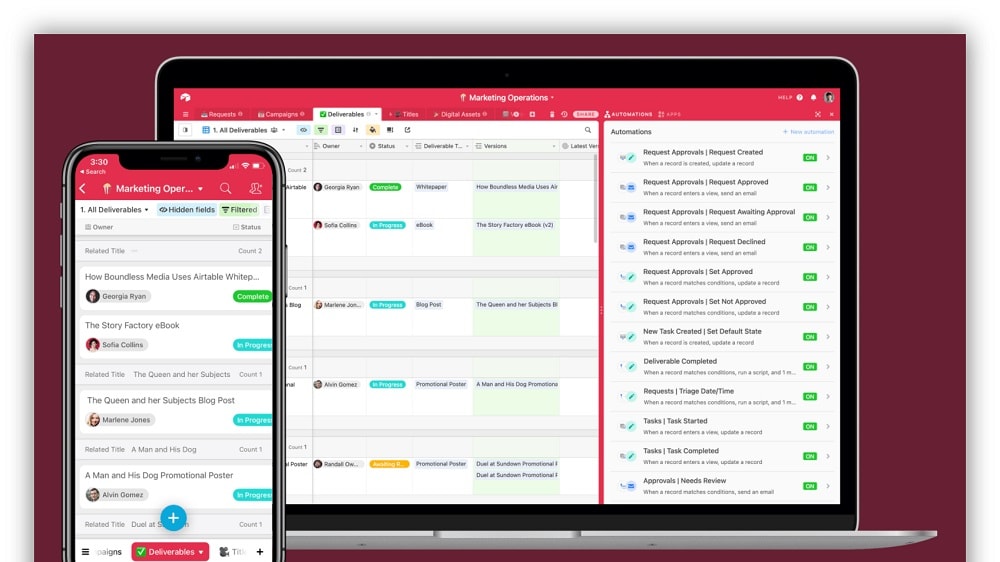
In the fast-paced business environment, staying on top of updates, deadlines, and key conditions is critical. Airtable demonstrates its strength in this aspect with a robust system for setting up alerts and reminders. Unlike Coda, Airtable offers advanced notification capabilities, where users can receive alerts when records are updated, deadlines are nearing, or specific conditions within the database are met. For example, a project manager using Airtable could set reminders for project milestones or get notified when a task status changes, ensuring that no critical update goes unnoticed. This feature is particularly valuable for maintaining organization and preventing potential oversights, as it keeps users consistently informed and aware of essential developments.
In contrast, while Coda offers various tools for project and data management, its capabilities in automated reminders and alerts are not as pronounced as Airtable's. This makes Airtable a more suitable choice for businesses and teams that require an enhanced level of oversight and immediate updates on their data and projects, ensuring a streamlined workflow and timely response to critical changes.
Airtable Leads in Customized Data Viewing Over Coda

In the dynamic world of data management and project tracking, the ability to flexibly view and interpret evolving business data is crucial. Both Airtable and Coda provide customizable options for data presentation, but Airtable's feature set for creating diverse views offers a distinct advantage. Airtable allows users to tailor their data views with options like Kanban boards for agile project management, grid views for spreadsheet-like organization, or calendar views for scheduling. For instance, a marketing team could use the Kanban view to track campaign progress while finance teams might prefer grid views for budget tracking. These specialized views help in focusing on relevant data, enabling more accurate and business-specific decision-making.
In contrast, Coda's strength lies in its document-style approach, where data and text can be intertwined, but its view customization, while powerful, may not offer the same level of intuitive and varied visualization as Airtable. This makes Airtable particularly effective for businesses that need to quickly adapt and interpret data in multiple formats, ensuring a clearer understanding and better decision-making tailored to unique business requirements.
Coda Surpasses Airtable in Template Customization for Diverse Needs

In the sphere of project management and database customization, both Airtable and Coda offer significant capabilities, but Coda distinguishes itself with its extensive range of customizable templates. While Airtable provides various field types to tailor databases, Coda's templates cover a wide array of use cases, from detailed project management layouts to comprehensive meeting agendas. These templates serve as robust starting points, allowing users to quickly adapt and modify them to fit specific business or project needs. For instance, a team can use a Coda template to set up a product roadmap, customizing it with their timelines and milestones, or adopt a meeting agenda template to streamline their weekly team meetings. This feature enhances the efficiency of setting up workflows, significantly reducing the time and effort involved in creating complex documents from scratch.
In comparison, although Airtable’s field customization offers flexibility, it may require more time to set up a database from the ground up. Coda’s ready-to-use, adaptable templates thus offer a significant advantage for users seeking to accelerate the process of establishing and managing their digital workflows.
Subscribe to our newsletters.
No FOMO here. Stay up-to-date on all the latest deals and news with our monthly newsletter straight to your inbox like 126,000+ entrepreneurs (+ Get 10% off on on our Premium Membership!)
Airtable vs Coda: Which is the best for your business?
Airtable is the best tool for you if:
- You need a platform that combines the simplicity of a spreadsheet with the power of a database, ideal for organizing diverse data types easily.
- You're looking for customizable views like Kanban, Grid, Calendar, and Gallery to visualize your projects and data in a way that best suits your workflow.
- You value extensive integration capabilities, allowing you to seamlessly connect with other apps like Slack, Google Drive, and many CRM systems to enhance your productivity.
- Real-time collaboration is a priority, as it offers excellent features for team cooperation, including shared views, commenting, and simultaneous editing, fostering team synergy.
- You prefer a user-friendly interface that doesn't require extensive technical know-how, making it accessible for teams and individuals with varying levels of tech expertise.
Coda is the best tool for you if:
- You're seeking an all-in-one platform that creatively combines traditional document creation with powerful database functionalities for a seamless integration of text and data.
- You appreciate a high degree of customization, with templates and interactive elements like buttons and sliders to create dynamic, app-like documents for various projects.
- Your focus is on a user-friendly yet versatile tool that allows for robust project management, note-taking, and task tracking within a single interface.
- Collaborative work is central to your operations, requiring real-time editing, commenting, and shared views to ensure effective team communication and project coherence.
- You prefer a platform with a slightly steeper learning curve but offers more integrated, advanced features for managing complex workflows and detailed documentation.

$1,000 in credits for 1 year on Airtable
Get $1,000 in credits for 1 year on Airtable and up to $1,000 savings with Secret.
Alternatives to Airtable & Coda
Promotions on Collaboration software
Start saving on the best SaaS with Secret.
Secret has already helped tens of thousands of startups save millions on the best SaaS like Airtable, Coda & many more. Join Secret now to buy software the smart way.






